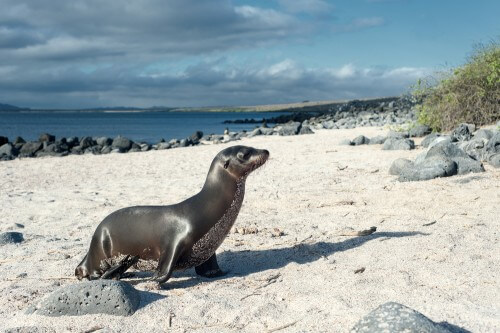Prof. Leftwich from George Washington University, a fluid dynamics researcher inspired by biological models, visited the Smithsonian National Zoo, and following her visit began applied research to develop a robot inspired by the movement of the sea lion.

By: Dafna Haim Langford
Prof. Leftwich from George Washington University, a fluid dynamics researcher inspired by biological models, visited the Smithsonian National Zoo, and following her visit began applied research to develop a robot inspired by the movement of the sea lion.
There are many ways to move in water. Many fish swim by moving their caudal fin sideways, while dolphins and whales move their caudal fin up and down to move forward. Jellyfish and squid contract their arms to move forward and sea snakes move their entire body up and down to produce movement. Sea lions, unlike these marine animals, swim by propelling their front fins, not the back ones, swimming efficiently and almost without a trail. Sea lions are wonderful swimmers, endowed with great flexibility and excellent maneuverability, in addition to their ability to change their direction of movement quickly and in a small radius of movement.
The researcher, in collaboration with the zoo staff, photographed the sea lions in motion, followed their graceful fin movements and designed a robotic fin that mimics this movement. Using a frame-by-frame analysis of the filmed video, she tracked the movements of the four front fins, and then each part of the fin in every form of movement and maneuver during swimming. It was found that the sea lions move the fins towards the body, and the water trapped in the space created creates a jet stream, which moves the sea lions quickly and silently forward. Based on the location of the fin's joints, Leftwich created a plastic robotic arm that moves similar to the movement of a sea lion's fin. She intends to test the performance of the robotic arm compared to sea lions in the educational aquarium in California.
A possible application is in the development of an unmanned vessel, transported using robotic fins instead of propellers, for underwater mining missions, for example, with minimal disturbance to underwater life. In addition, Leftwich believes that this design will allow energy efficient movement, and will allow a long range of movement with little energy.
